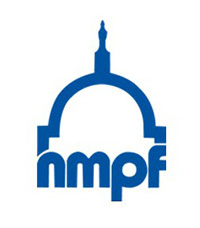
In its continued effort to share the compelling story of continuous improvement on America’s dairy farms, the National Dairy Farmers Assuring Responsible Management (FARM) Program has opened participation in its third component, FARM Environmental Stewardship (ES).
The Environmental Stewardship module joins the FARM Program’s two other pillars, FARM Animal Care and FARM Antibiotic Stewardship. The voluntary FARM Environmental Stewardship program helps dairy producers augment their environmental management efforts by identifying ways to improve their on-farm sustainability.

Mulhern
“America’s dairy farmers have long been active stewards of the environment,” said Jim Mulhern, President and CEO of NMPF. “Farmers should be proud that, today, producing a gallon of milk uses 65 percent less water, requires 90 percent less land and has a 63 percent smaller carbon footprint than it did 70 years ago. The FARM Environmental Stewardship program captures more detailed data on these great advances, while at the same time presenting farmers with useful information that can help them improve their farms efficiency and use fewer natural resources, all while saving money.”
FARM ES provides a comprehensive estimate of the greenhouse gas (GHG) emissions and energy use per pound of milk produced on dairy farms by asking producers a limited set of questions. The tool is based on a life-cycle assessment (LCA) of fluid milk conducted by the Applied Sustainability Center at the University of Arkansas, incorporating existing data from more than 500 dairy farms across the United States.
By tracking advances in dairy production efficiency, farmers can use FARM ES to assure dairy customers and consumers of their commitment to ongoing environmental progress. Producers can also use the results to identify opportunities for changes that could increase their farm’s sustainability and reduce their cost of production.
Dairy cooperatives and farmers wishing to use the ES module can opt in through the existing FARM Program database, which allows FARM evaluators to see the assessment in the existing web and mobile applications. FARM has created a random sampling protocol for the organizations that choose to use the ES module. This voluntary protocol allows FARM Program milk handlers to randomly select farms for an assessment, and provides instructions for how to document and promote the resulting improvements in their dairy supply chain.
The FARM Program has released several documents, videos and trainings to educate those interested in participating in the FARM Environmental Stewardship program. They can be found on the Environment page of the FARM website.
NMPF, along with dairy community partners Dairy Management, Inc. and the Innovation Center for U.S. Dairy, support the use of safe and efficient environmental practices to help dairy operations remain stewards of a healthy ecosystem.










